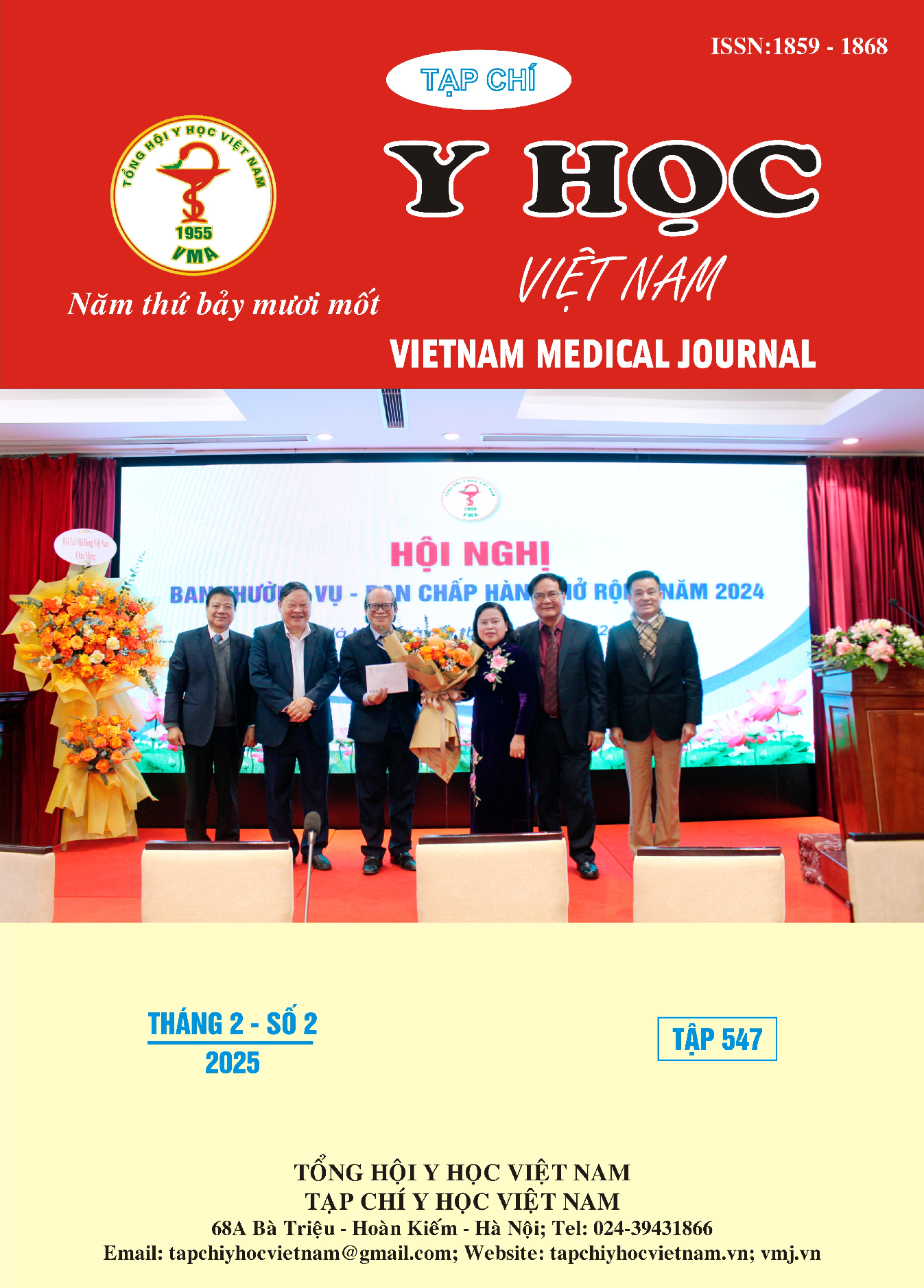RESEARCH ON CLINICAL CHARACTERISTICS AND IMAGING DIAGNOSIS OF CONGENITAL NASAL OBSTRUCTION IN CHILDREN
Main Article Content
Abstract
Objective: To describe the clinical characteristics and imaging diagnosis of congenital choanal atresia in children from 2018 to 2024 at the Vietnam National Children's Hospital. Research Method: A descriptive observational study of a case series involving 20 patients diagnosed and surgically treated for congenital choanal atresia between January 1, 2018, and August 1, 2024, at the Vietnam National Children's Hospital. Results: The male to female ratio was 1:1.5; the rate of full-term births was 85%. Endoscopic examination showed a bilateral atresia to unilateral atresia ratio of 1.5:1; right-sided atresia to left-sided atresia was 37.5%:62.5%. CT imaging revealed mixed membrane and bone atresia in 80%, membrane atresia in 15%, and bone atresia in 5%. The most common functional symptom was frequent nasal obstruction (90%). Bilateral choanal atresia was most commonly associated with frequent nasal obstruction (91.7%) and intermittent feeding (91.7%), while unilateral choanal atresia was most commonly associated with frequent nasal obstruction (87.5%). Patients with associated congenital anomalies accounted for 60%, with cardiac anomalies comprising 30%. Conclusion: The incidence in females is higher than in males; bilateral choanal atresia is more common than unilateral, with left-sided atresia more prevalent than right-sided; mixed membrane-bone atresia is the most common type. The most frequently encountered functional symptom is frequent nasal obstruction. The most common physical signs are methylene blue staining and the inability to pass a catheter through the choana, with no mist observed during laryngoscope examination at the choana. The majority of patients have associated anomalies, with cardiac defects being the most common.
Article Details
Keywords
Choanal Atresia
References
2. Hengerer A.S., Brickman T.M., Jeyakumar A. Choanal atresia: embryologic analysis and evolution of treatment, a 30-year experience. Laryngoscope. 2008; 118(5), 862-866
3. Eric Moreddu, Marie-Eva Rossi, Richard Nicollas. et al. Prognostic Factors and Management of Patients with Choanal Atresia. The Journal of Pediatrics. 2019; 204, 234-239.
4. Newman J.R., Harmon P., Shirley W.P. et al. Operative management of choanal atresia: a 15-year experience. JAMA Otolaryngol Head Neck Surg. 2013 ;139(1), 71–75
5. Kinis V., Ozbay M., Akdag M. et al. Patients with congenital choanal atresia treated by transnasal endoscopic surgery. J Craniofac Surg. 2014; 25(3), 892–897
6. Rodriguez H., Cuestas G., Passali D. A 20-year experience in microsurgical treatment of choanal atresia. Acta Otorrinolaringol Esp. 2014; 65(2), 85–92.
7. Van Den Abbeele T., Francois M., Narcy P. Transnasal endoscopic treatment of choanal atresia without prolonged stenting. Arch Otolaryngol Head Neck Surg. 2002; 128(8), 936–940
8. Richardson M.A., Osguthorpe J.D. Surgical management of choanal atresia. Laryngoscope. 1988; 98(9), 915–918.
9. Sharma R.K., Lee C.A., Gunasekaran S. et al. Stenting for bilateral congenital choanal atresia-a new technique. Int J Pediatr Otorhinolaryngol. 2021; 70(5), 869–874.
10. Orval E. Brown, Patrick Pownell, Scott C. Manning. Choanal Atresia: A New Anatomic Classification and Clinical Management Applications. Laryngoscope.1996; 106(1), 97–101.


